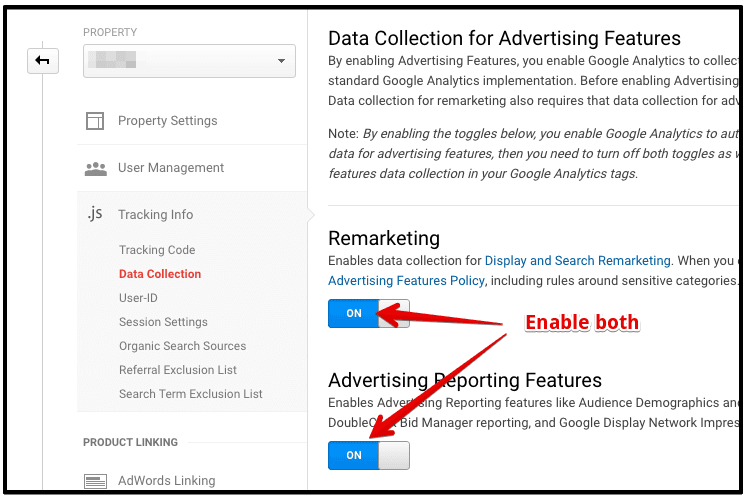Taking Advantage Of Remarketing in Google Analytics: A Comprehensive Guide
Utilizing remarketing in Google Analytics supplies services a tactical side in reaching out to possible clients. This guide will certainly drop light on the crucial steps included in harnessing the full possibility of remarketing in Google Analytics, leading to enhanced advertising end results.
Comprehending Remarketing in Google Analytics
Remarketing in Google Analytics allows services to purposefully target users who have formerly communicated with their website or mobile app. By leveraging information from Google Analytics, companies can produce personalized remarketing listings based upon customer behavior, such as web pages seen, activities taken, or specific objectives achieved. This effective device makes it possible for businesses to re-engage with individuals who have shown passion in their services or products, inevitably enhancing the possibility of conversion.
Understanding the different kinds of remarketing methods is essential for an effective campaign - What Is “Remarketing” In Google Analytics?. Google Analytics supplies different options, consisting of basic remarketing, vibrant remarketing, and remarketing lists for search advertisements (RLSA) Each type serves a distinct function and can be tailored to fulfill details marketing purposes
Furthermore, examining the efficiency of remarketing campaigns is important for enhancing results. Google Analytics gives important insights right into the efficiency of various remarketing methods, enabling organizations to make data-driven choices and improve their targeting strategy. By continually adjusting and keeping an eye on remarketing efforts based upon analytics information, companies can optimize ROI and drive success in their advertising and marketing campaigns.
Establishing Remarketing Projects

After establishing up audience checklists, the following action is to link Google Analytics with Google Ads. By connecting these 2 systems, companies can seamlessly move audience lists from Google Analytics to Google Advertisements for remarketing purposes. This assimilation enables more precise targeting and better campaign efficiency.
As soon as the accounts are connected, businesses can develop remarketing projects in Google Ads making use of the target market provides formerly defined in Google Analytics. These campaigns can be personalized with particular advertisement creatives, messaging, and bidding methods to successfully re-engage with past visitors and drive conversions. By complying with these actions, services can utilize the power of remarketing to enhance their advertising initiatives and increase ROI.
Using Audience Division Techniques

Predefined sections in Google Analytics allow you to rapidly examine typical target market categories fresh users, returning users, or users that finished a certain goal on your internet site. Custom sections, on the other hand, enable you to develop unique sections based on Our site specific standards next that are crucial to your organization objectives. Dynamic remarketing checklists immediately adjust based on user actions, revealing individualized advertisements to users who have interacted with your site in particular ways.
Analyzing Remarketing Efficiency Metrics
Upon examining the efficiency of remarketing projects in Google Analytics, the analysis of crucial efficiency metrics gives beneficial understandings right into audience involvement and conversion rates. By diving into metrics such as click-through prices (CTR), conversion rates, cost per acquisition (CPA), and return on ad invest (ROAS), marketing professionals can gauge the success of their remarketing efforts. Evaluating these metrics enables marketers to enhance projects, fine-tune target market targeting, and assign spending plans efficiently to boost overall remarketing performance.
Maximizing Remarketing Methods
When refining remarketing strategies in Google Analytics, concentrating on target market segmentation is paramount for accomplishing campaign success. By splitting your audience into internet particular sectors based on their behavior, demographics, or passions, you can tailor your ads more properly per team. This targeted method boosts the chance of engaging customers who have actually already shown interest in your service or products, bring about greater conversion rates.
An additional essential element of maximizing remarketing strategies is continually testing and refining your campaigns (What Is “Remarketing” In Google Analytics?). A/B testing various advertisement creatives, messaging, or deals can aid you determine what reverberates ideal with your target market and drives the most conversions. By assessing the efficiency of these examinations in Google Analytics, you can make data-driven decisions to enhance your remarketing efforts further
Furthermore, leveraging vibrant remarketing can considerably improve your project results. This function allows you to show customized ads to individuals based upon their previous communications with your internet site, showcasing solutions or products they have actually formerly viewed. By delivering tailored web content to users based on their habits and interests, dynamic remarketing can assist enhance interaction and drive conversions.
Conclusion
Finally, taking advantage of remarketing in Google Analytics is a tactical approach to target users that have actually previously engaged with a website. By developing customized audience checklists and making use of target market division approaches, businesses can optimize remarketing projects for raised conversion rates. Analyzing performance metrics and continuously optimizing strategies are important for taking full advantage of the performance of remarketing efforts.
Google Analytics offers various options, consisting of basic remarketing, vibrant remarketing, and remarketing checklists for search advertisements (RLSA)After establishing up audience checklists, the following step is to connect Google Analytics with Google Advertisements. By linking these two platforms, services can perfectly move target market checklists from Google Analytics to Google Advertisements for remarketing purposes.As soon as the accounts are connected, businesses can produce remarketing projects in Google Ads using the audience notes previously defined in Google Analytics.When refining remarketing approaches in Google Analytics, focusing on audience segmentation is extremely important for achieving campaign success.
Comments on “Secret Functions of Remarketing In Google Analytics Explained”